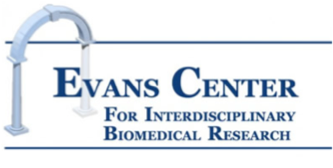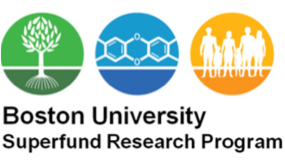The Xposome Portal
Chemical Screening using high-throughput transcriptomics assays
Each of the chemical screen part of the Xposome can be queried through one of these modalities
Annotation
Provides description of each chemical profiled, including at which dose(s) and concentration(s), as well as reported adverse effects associated with exposure.
Marker Explorer
Interactive explorer for a single queried markers (gene, gene-set, or CMap perturbagen/perturbagen class).
Chemical Explorer
For any screened chemical, queries can return: i) normalized measure of each gene expression response; ii) geneset enrichment scores measuring the coordinated response of the genes in a geneset or pathway to the chemical; or iii) the connectivity to (i.e., similarity of the response to those of) chemicals or classes of chemicals profiled in the CMap.
Heatmap Explorer
A heatmap visualizer to explore gene expression, gene set enrichment, and connectivity results across genes and chemicals. Interactive visualization based on Morpheus.
K2Taxonomer
Interactive visualization of the taxonomic hierarchy induced by the transcriptional responses to chemicals in a screen. Supports the gene- and geneset-based querying and comparison of chemical groups’ transcriptional responses. Based on K2Taxonomer.
Check out our documentation on how to dockerize the Xposome application and access the codebase at our Github repository
Users can retrieve portal data from the Xposome application through our API pipelines and create their next projects
Explore a list of our publications that are associated with the building block of the Xposome Portal
Overview
Exposure to environmental chemicals is known to play a significant role in multiple adverse effects, including carcinogenesis (carcinogens), genotoxicity (genotoxicants), and metabolic disruption (metabolism disrupting chemicals [MDCs]). While for some chemicals their adverse effects are well-known, only a small fraction of those in commercial use and to which the human population is exposed has undergone thorough testing. Furthermore, many of the biological mechanisms of actions of chemical carcinogens and MDCs are poorly understood. For example, the current gold standard for chemical carcinogenicity testing is the 2-year rat bioassay, which is expensive and time-consuming, and its relevance to human carcinogenesis has been questioned. To date, about ~1500 chemicals have been tested for long-term carcinogenicity in rodent models by this approach, out of the ~85,000 chemicals used in common household products or industrial settings. Here, we aim to collect toxicogenomics screens profiling the short-term chemical exposures in mammalian cell lines. This collection will support the investigation of candidate biomarkers (genes and pathways) of chemical exposure, and will support the investigation of the chemicals' mechanisms of action.
Datasets
Carcinogenicity Screens
Currently, we have profiled two sets of chemicals in projects aimed at predicting liver (Li et al., 2019) and breast carcinogenicity, respectively, using short-term transcriptomics assays based on human cell lines carcinogenome.org. Our previous studies (Gusenleitner et al., 2014) have shown that carcinogenicity prediction is exquisitely tissue-specific, and requires the fine tuning of the predictive model to the tissue being tested, hence the need for generating tissue-specific screens. The first set of chemicals is composed of known liver carcinogens (according to evidence of tumor growth in rat livers according to the CPDB and additional sources), non-carcinogens (known not to induce tumors in any sites in rats according to the CPDB), and other chemicals of interest to our collaborators in the Boston University Superfund Research Program. HEPG2 (human liver cancer) cell lines are exposed to each of the chemicals at 6 different doses for 24H. The second set of chemicals is composed of known or suspected breast carcinogens (according to the CPDB or (Rudel et. al., 2007)), known lung carcinogens, non-carcinogens, or collaborator-selected chemicals. MCF10A (human non-transformed breast epithelial) cell lines as well as MCF10A with P53 knock-down, are exposed to each of the chemicals at 3 different doses for 24 hours and their gene expression profiled.
Metabolism Disrupting Chemical (MDC) Screen
We have also profiled a set of chemicals known or suspected to play a role in metabolism regulation. 3T3-L1 cells were differentiated in the presence of 76 chemicals (negative controls, synthetic nuclear receptor ligands known to influence adipocyte biology, suspected environmental PPARγ ligands), and their mRNA expression was quantified by highly multiplexed RNA-Seq (Kim, Reed, et al., 2020).
Public Toxicogenomics Databases
In addition to in house-generated data, we included high-profile toxicogenomics screens previously generated. Currently, we are hosting the NIEHS/NTP-supported DrugMatrix, and the NBIOHN-supported TG-GATEs. We plan to incorporate additional resources going forward.
None of the TAS lies within the selected boundary. Please select another zone!
|
K2Taxonomer Results
Loading...
Q-Values:
1
0.25
0.1
0.05
0.01
0.001
< 0.001
|
Cluster Information
Loading...
Loading...
Loading...
|
|
Click and hold a node for 2 seconds to select or unselect a sub-module of compounds
Loading...
|
Select 2 or more nodes to compare
Loading...
|



